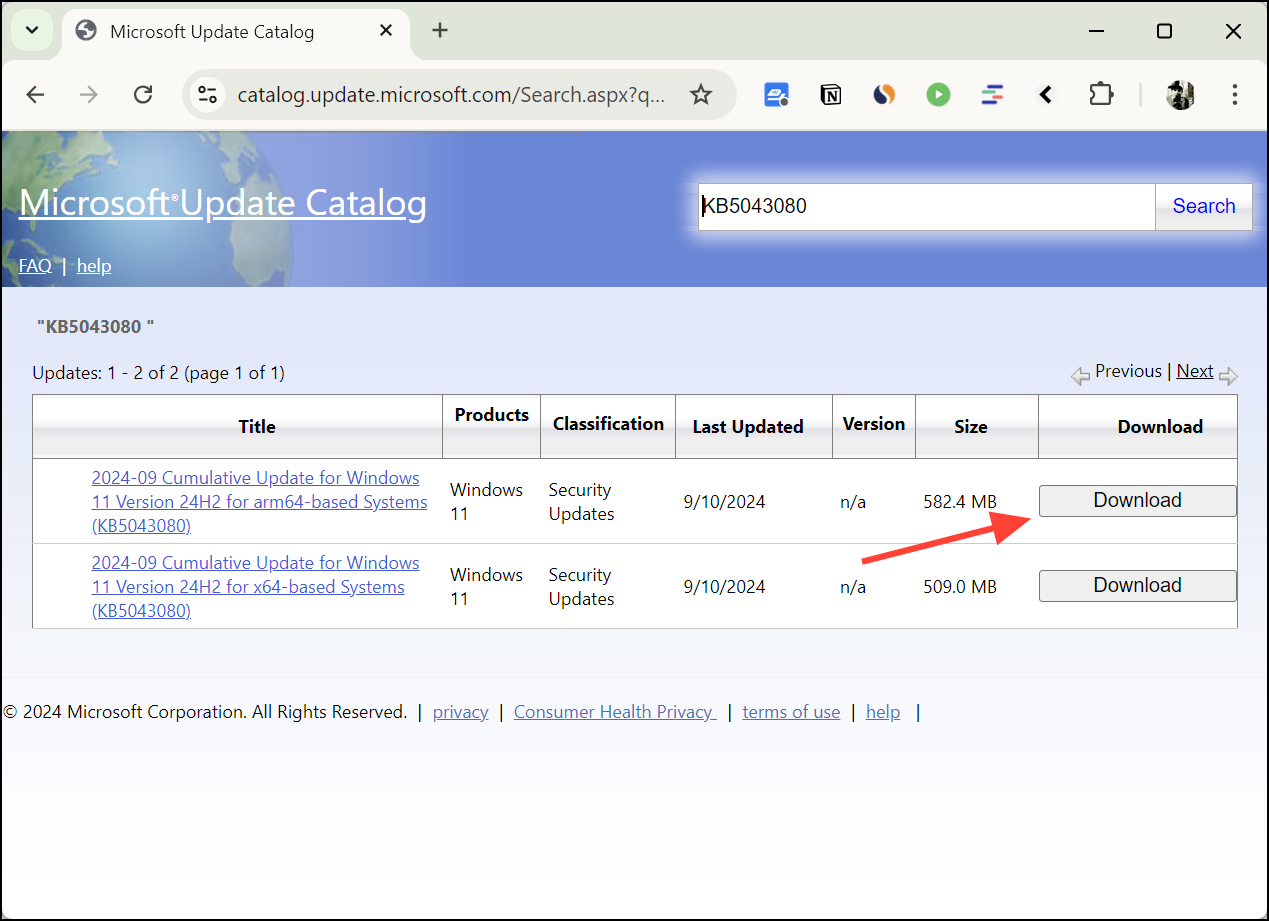Have you encountered an "Operation is not supported" error when trying to install a Windows update? Don't worry! This article will guide you through fixing this issue step-by-step.
What's Causing the Problem?
This error typically occurs when:
- You've installed a latest checkpoint cumulative update.
- You've added a Feature on Demand (FoD) or Language Pack (LP) without an internet connection.
- You're trying to install a newer update by double-clicking the .msu file.
The issue arises because your computer can't update the FoD or LP without connecting to Windows Update or WSUS.
How to Solve It
The solution is simple: we need to download and reinstall all the necessary updates. Here's how:
Step 1: Download the update manually
- Go to the Microsoft Update Catalog website.
- In the search box, enter the KB number of the latest update (e.g., 5043080 for September 2024). Then, click the "Search" button.

- In the search results, locate the update for your system architecture:
- For 64-bit systems, look for "x64-based"
- For ARM-based systems, look for "ARM64-based"
- Click "Download" for your device type (x64 or arm64).

- In the pop-up window, you'll either see multiple .msu files or just one file. These include:
- The latest update file
- All checkpoint cumulative updates files released before this update.
- Click on the
.msufile link to download it. If you see multiple MSU files, download all of them by clicking on each file.

- Put all the
.msufiles you downloaded above in a new folder on your computer (likeC:\Updates). This folder should not contain any other MSU files.
Step 2: Install the Updates
You have two options for installing the updates:
Option A: Install Manually
- Open your
C:\Updatesfolder. - If you downloaded multiple .msu files:
- Sort the files by name to ensure you install them in the correct order (earliest to latest).
- If you only downloaded one .msu file, skip this step.
- If you have multiple files, start with the oldest (lowest-numbered)
.msufile. If you only have one file, simply double-click it. - Wait for the Windows Update Standalone Installer to complete the installation.
- If prompted to restart, choose "Restart Later" unless this is your only update file.
- If you have multiple files, repeat steps 3-5 for each
.msufile, going from oldest to newest. If you only had one file, you can skip this step. - After installing all update files (or your single update file), restart your computer.
Option B: Use DISM command to install all .msu files
If you're comfortable with command prompts, this method is faster for installing multiple MSU files:
- Press
Win+Xand select "Windows Terminal (Admin)" or "PowerShell (Admin)." - In the terminal window, type the following command:
dism /online /add-package /packagepath:C:\Updates\*.msu - Press
Enterto execute the command. - DISM will install all updates in the correct order automatically.
- When the process completes, restart your computer.
Verifying the Update Installation
After restarting your computer, it's important to verify that all updates were installed correctly:
- Open the Settings app (press
Win+I). - Navigate to System > Windows Update.
- Click "Check for updates" to ensure all updates are installed correctly.
- If no new updates are found, your system is up to date.
By following these steps, you should be able to resolve the "Operation is not supported" error and successfully install all necessary Windows updates. Remember, keeping your system updated is crucial for security, performance, and compatibility with the latest software.

